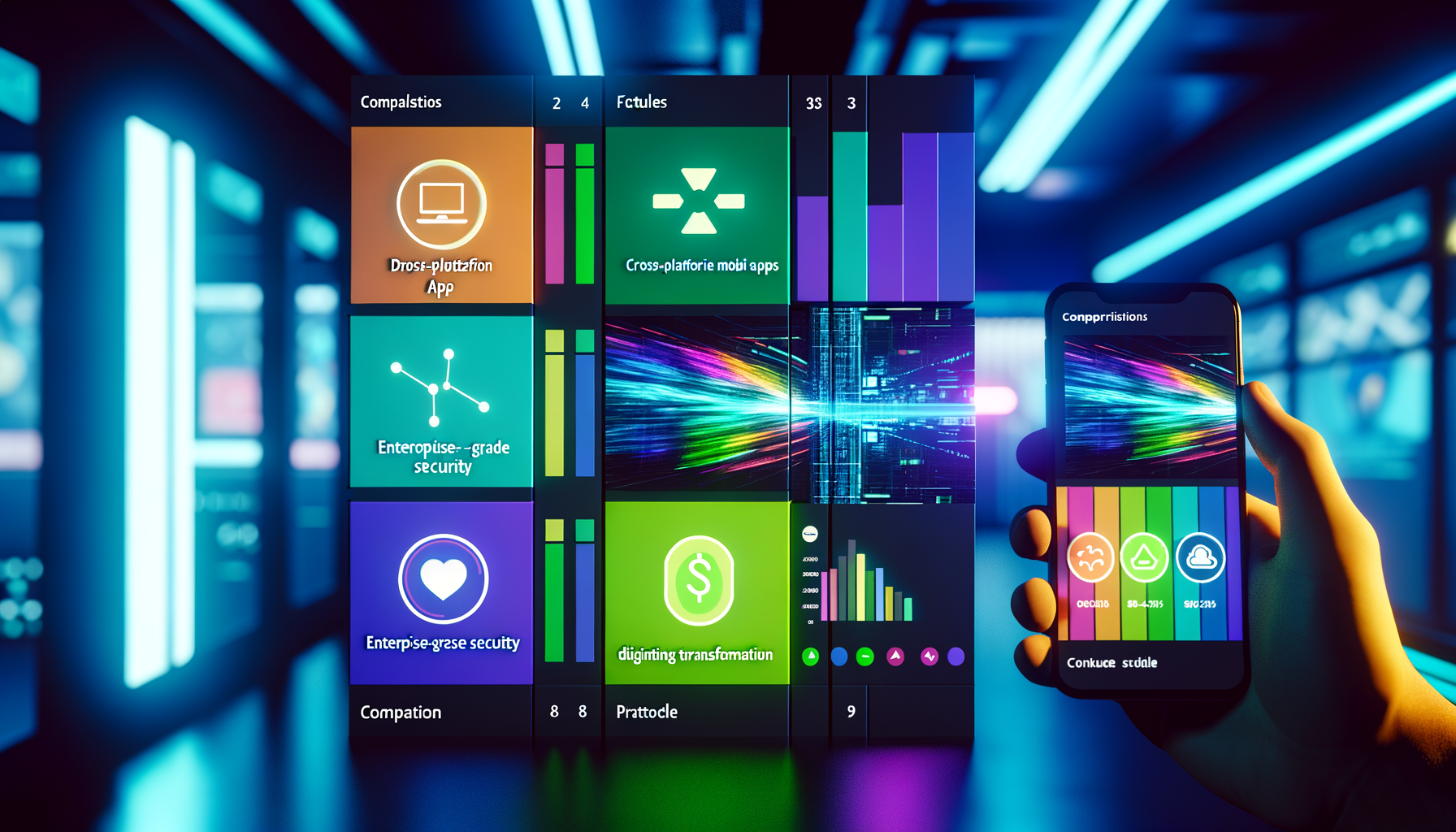Did you know that cross-platform mobile apps can cut development time by 30% while boosting ROI significantly? In this rapidly evolving tech landscape, where innovation is the key to staying ahead, embracing cross-platform mobile app development is not just a trend—it's a necessity. This guide will delve into how leading frameworks, AI, and 5G technology are shaping the future of mobile apps.
Introduction to Cross-Platform Mobile Apps

Team collaborating on mobile app code review, diverse tech team in a bright office space.
Cross-platform mobile apps are designed to function on multiple operating systems, primarily iOS and Android, using a single codebase. This approach saves time and resources, making it an attractive option for companies aiming to maximize their digital presence without inflating budgets.
The Pacific Northwest has emerged as a hub for tech innovation, with cities like Vancouver leading the charge in adopting cross-platform solutions. By leveraging local talent and cutting-edge tools, businesses here are setting benchmarks for digital transformation.
Quicklook specializes in creating agile, scalable mobile applications that keep pace with technological advancements, ensuring clients are always a step ahead.
LIST
- •Cost-Effective Development
- •Faster Time to Market
- •Unified User Experience
Top Frameworks for 2025

Comparison chart of Flutter and React Native features, vibrant colors.
As we look toward 2025, two dominant frameworks stand out: Flutter and React Native. Both offer robust solutions for developing high-performance cross-platform apps.
Flutter, developed by Google, is known for its expressive UI components and rapid development cycle. It allows developers to create natively compiled applications for mobile, web, and desktop from a single codebase.
React Native, backed by Facebook, has a strong community and is ideal for apps where performance is critical, thanks to its ability to leverage native components.
CALLOUT
Choosing the right framework depends on project specifics, budget, and performance needs.
AI and ML in Mobile Apps

AI-enhanced mobile app interface with predictive analytics graphs.
AI and machine learning are no longer just buzzwords; they're integral to the functionality and personalization of mobile apps.
Integrating AI into mobile apps can enhance user experience by offering predictive analytics, personalized recommendations, and automating routine tasks.
At Quicklook, we incorporate AI solutions that not only enhance app functionality but also provide insights into user behavior, helping businesses refine their strategies.
QUOTE
"AI in mobile apps is not just about automation; it's about creating intelligent experiences."
The Role of 5G

Illustration of 5G network enhancing mobile app capabilities.
5G technology is revolutionizing mobile app development by providing faster data speeds and more reliable connections. This enables apps to deliver richer experiences without latency issues.
For cross-platform apps, 5G allows for seamless integration of high-quality video streaming, real-time data processing, and enhanced AR/VR capabilities.
Quicklook's mobile solutions are optimized to leverage 5G, ensuring that your app is not only fast but also future-ready.
LIST
- •Faster Data Speeds
- •Real-Time Processing
- •Enhanced AR/VR Experience
Best Practices for UI/UX

UI/UX design team brainstorming with wireframes and digital sketches.
The success of any app hinges on its user interface and experience. Best practices in mobile UI/UX design focus on intuitive navigation, aesthetic appeal, and responsiveness.
With cross-platform apps, maintaining consistency across different devices is crucial. This involves using adaptive design techniques and ensuring that UI elements are optimized for each platform.
At Quicklook, we prioritize user-centric design, ensuring that each app we develop is not only functional but also a joy to use.
CALLOUT
Consistency is key in UI/UX design for cross-platform apps to ensure a seamless user experience.
Frequently Asked Questions
QWhat are the top cross-platform mobile app development frameworks in 2025?
QHow do AI and machine learning enhance cross-platform mobile apps?
QWhat role does 5G play in cross-platform mobile app development?
Conclusion
Cross-platform mobile apps offer a strategic advantage by reducing costs and increasing reach. Leveraging frameworks like Flutter and React Native, along with technologies such as AI and 5G, empowers businesses to deliver exceptional user experiences.
Future Vision
As technology evolves, staying ahead with the right tools and strategies is paramount.
Schedule your AI audit with Quicklook.
